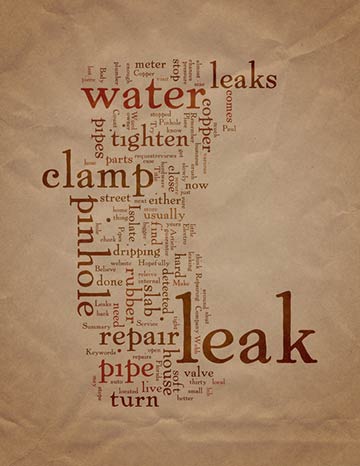If your pipes are leaking, the next thing is that you won’t have enough water from your taps. It makes everything difficult because you can’t fill your tub as quickly as necessary and even washing can’t be completed in time. Moreover, leaks are very costly. The bill continues to swell even for water that you never used. Surely, everyone would want to bring to an end such problems.
 Top Household Leak to Save Water From
Top Household Leak to Save Water FromListed below are 5 of the most common household leaks complete with tips on how to prevent or correct them.
1. Washing Machine Leaks
Most people prefer to place the washing machine either on the main floor or close to the living room which is very risky because these are areas where valuable furnishings and most other electronic equipments also reside. Moreover, few laundry rooms have drainage systems that could cause a leak.
Consider replacing plastic and rubber hoses with steel braided ones; tighten hose connections whenever you feel that they’re too loose; turn off the supply to your washing machine whenever you leave the house; and if possible replace screw-type valves with dual-ball valves.
2. Water Heater Leaks
Water heater leaks, just like washing machine leaks, are very common. The risk becomes even higher if the heater resides on the main floor instead of the basement. Beware that heaters also have a life span – typically about ten years – after which they begin to rust, corrode and eventually leak.
To stay safe, consider purchasing a heater with an extended warranty – up to 15 years; occasionally hire a professional to check the system; and flush the hot water tank periodically especially if you use hard water.
3. Plumbing System Leaks
Frozen pipes that eventually burst and high water pressure are the two main causes of plumbing leaks. Burst pipes are particularly very costly with repairs often costing in excess of $8,000.
The most important thing is to watch out for signs of freezing. Look out for water spots on floors and ceilings; watch out for abnormal bills; and be keen when turning off the faucets – a “banging” sound may signal a breakage. It also helps to check on the pressure and insulating pipes that are prone to freezing.
4. Leaks In Sinks, Bathtubs, and Showers
Overflows, clogs, broken plumbing, and faulty pipes are the main sources of leaks in sinks, bathtubs, and showers.
To stay safe, regularly inspect you drainage systems and replace deteriorated grout and caulk around sinks, bathtubs, and showers. Look out for soft areas around floors, walls, and bathroom and kitchen plumbing. Finally, fix leaking faucets quickly and call a Melbourne professional plumber for problems that you feel are beyond your capacity.
5. Leaking Roofs, Windows, and Sidings
Old roofs, broken windows, and insufficient siding may also cause leaking in the home. When it rains, the rain from outside will easily find way into your house causing several problems.
Start by clearing the roof and gutters of branches, leaves, and other debris. The gutters should be cleaned at least twice every year. An inspection of the roof once a year is also recommended. For the windows and doors, repair any damaged caulk and repaint their frames accordingly.
Summary
There are several other sources of leaks in the home that are not covered here. You are free to find out more about them as it helps you to stay alert and avoid costly repairs necessitated by preventable leaks.

